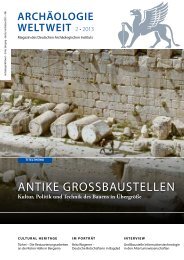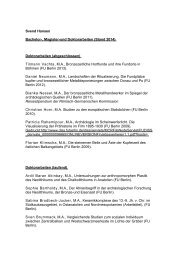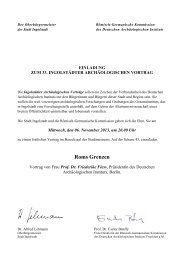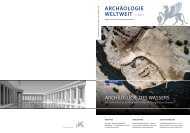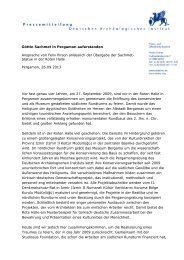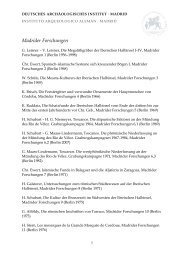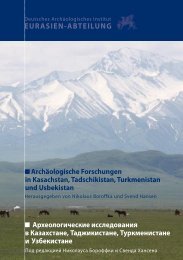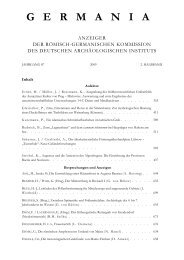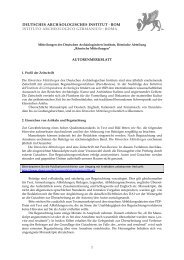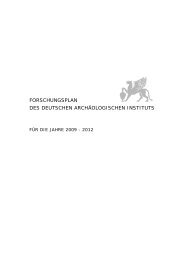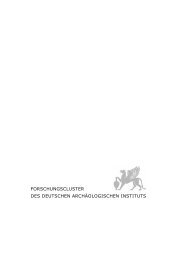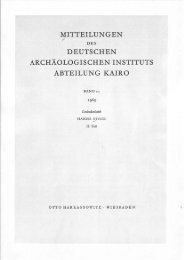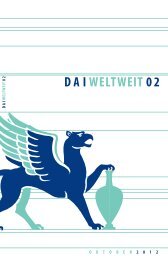Untitled - Deutsches Archäologisches Institut
Untitled - Deutsches Archäologisches Institut
Untitled - Deutsches Archäologisches Institut
Create successful ePaper yourself
Turn your PDF publications into a flip-book with our unique Google optimized e-Paper software.
Inventory in the photo archive<br />
The photo archive of the Istanbul Department contains a<br />
wide spectrum of historical images from the 1850s onward<br />
– important for both art and cultural history – including, in<br />
particular, works from James Robertson, Sébah & Joailler,<br />
the Frères Abdullah and Guillaume Berggren, in addition<br />
to collections accumulated from various photographic missions<br />
to sites and museums across Anatolia.<br />
In August 2011, an inventory was compiled of all the<br />
photographic objects in the archive for the first time. The<br />
holdings are impressive both in terms of quantity and<br />
quality: the departmental photo archive contains 10,235<br />
glass plates, 44,182 roll film negatives, 40,665 small-format negatives and 2,213 large-format<br />
negatives. The Pergamon archive, which is organized separately, holds a further 3,440 glass<br />
plates, 48,567 roll film negatives, 62,297 small-format negatives and 182 large-format negatives.<br />
Hence, the two archives hold a total of 211,781 images.<br />
At the same time we recorded the state of preservation of the plates and negatives, and separated<br />
“nitrates” (10,957) and “acetates” (252 are damaged, 1156 are under observation) from<br />
the remaining film stock. Photographic material manufactured with nitrate (nitrocellulose<br />
negatives) is classed as explosives under the German Explosives Act, since they can self-ignite<br />
at temperatures over 38° centigrade. Acetate based negatives (triacetate negatives), on the<br />
other hand, pose a threat to other negatives because they release acetic acid and can destroy<br />
themselves in what is known as an autocatalytic reaction.<br />
Through the ongoing digitization of the glass plates and negatives, and the recently completed<br />
normalization of the database, a large portion of the stock will be available for research<br />
online from the portal www.arachne.uni-koeln.de before the end of the year. The high number<br />
of requests shows the undiminished interest in photographic images of high quality, not<br />
only for research purposes but also, for instance, in planning restoration and preservation of<br />
historical monuments in Istanbul.<br />
Anja Slawisch<br />
7



